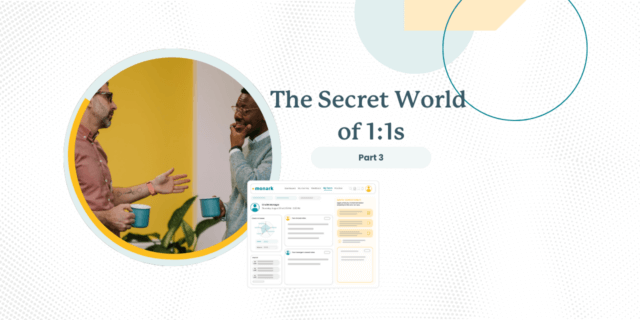
Leading Through Conversation: Using 1:1s to Help Both You and Your Direct Reports Reach Your Objectives

One-on-one meetings (1:1s) are a vital tool for leaders and managers, yet many receive little to no guidance on how to conduct them effectively. It’s ironic—given that leaders are meant to guide and support their teams—that this powerful opportunity to connect with employees is often underutilized. In fact, a Gallup study revealed that only 15% of employees who receive minimal or no 1:1 time with their manager are engaged at work.
But the value of 1:1s goes beyond just helping direct reports. These meetings also benefit leaders by freeing up time and boosting their influence on team performance, especially when their success is tied to their team’s outcomes. Through regular communication and proactive problem-solving, leaders can use 1:1s to both achieve their own goals and drive better results for their teams.
The great news is that running effective 1:1s doesn’t have to be complicated. If you’re a leader looking to unlock the full potential of these meetings and see the benefits firsthand, keep reading for some practical tips and strategies you can start using right away:
Let your direct report lead
Give your direct report the opportunity to bring up their points first before diving into your own agenda. While it may seem counterintuitive, leading by listening is key to a successful 1:1. Meetings where direct reports, or both the manager and direct report, create the agenda tend to be far more effective than those driven solely by the manager. Your direct report will tell you what they need—if you give them the space to do so. Plus, no one enjoys a 1:1 where the manager dominates the conversation.
If your direct report doesn’t always have talking points, don’t end the meeting early. Use thoughtful questions to prompt discussion, helping them understand what topics are worth bringing up in the future. For instance, you could say, “Maybe we could talk about that email you sent for review this week? Would it help to go over any guidelines for client communication?” Framing questions this way shows you’re here to support them, not micromanage.
Review both agendas
While your direct report should lead, you’ll also have your own topics to cover. Start the meeting by reviewing both agendas to ensure the most urgent topics are prioritized. However, avoid always prioritizing the urgent over the important, as it may signal to your direct report that you’re not truly interested in their concerns.
Monark’s upcoming 1:1 tool will make this easier by allowing both the leader and direct report to input their notes before the meeting. Plus, a quick five-question pulse check will help you catch any unmet needs.
Stick to a consistent schedule
We’ve all been there—deadline looming, and yet, you’ve got an internal meeting on your calendar. No problem, just cancel it, right? But here’s the thing: regularly rescheduling your 1:1s can throw off the flow and actually lead to more interruptions throughout the week. When direct reports know they can rely on their 1:1s to address roadblocks and ask questions, they’re less likely to reach out over non-urgent matters.
Monark’s 1:1 tool integrates with your calendar, keeping you on track and sending reminder emails to direct reports, encouraging them to prepare in advance and reducing the chance of distractions later.
Change up the topics
Don’t let your 1:1s turn into the same old status updates. While it’s important to check in on current work, use these meetings to cover more meaningful topics like career development, skills improvement, and overall job satisfaction. These conversations are essential for long-term success.
Instead of trying to cram everything into a single meeting, rotate topics and cover one or two per session. This keeps things fresh and shows your direct report that you genuinely care about their input. Monark’s tool will soon feature a rotating set of research-backed prompts to ensure these conversations stay productive and engaging.
Follow up
A great way to show you’re listening is to follow up on past conversations. A simple, “How did the solution we discussed for X problem work out?” can reinforce that you value their input and are invested in their success.
Taking notes is key to effective follow-up. Monark’s tool will store your meeting notes in one easy-to-access place, making it simple to pull them up and revisit key points. If you’re not a fan of taking notes during meetings, set aside a couple of minutes afterward to jot down important follow-up items for next time.
By applying these strategies, you’ll transform your 1:1s into powerful tools for both your team’s growth and your own success.
References:
- Rogelberg, S. G. (2024). Glad we met: The art and science of 1:1 meetings. Oxford University Press.

